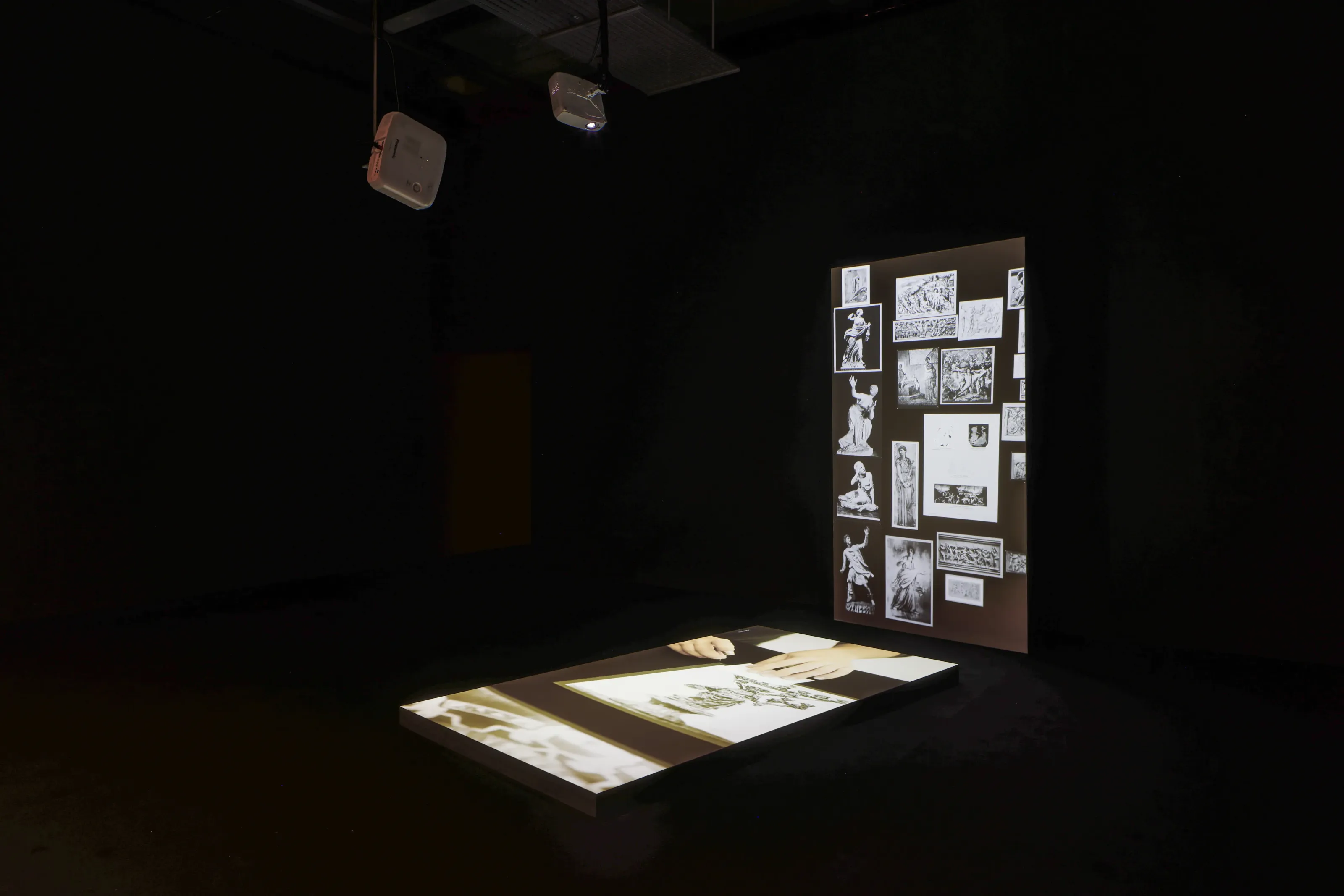making of Mnemosyne (after Aby Warburg)
2021
In the 1920s, the art expert and cultural scientist Aby Warburg devised his Bilderatlas Mnemosyne (The Mnemo- syne Atlas), sixty-three panels of photographs of artworks arranged next to collaged clippings from newspapers and advertisements of the time. In compiling these pictures, he aimed to trace similar gestures and patterns ranging from antiquity to the Renaissance to his day and age. Through this imagery, Warburg wanted to visual- ize the connections between epochs in an effort to produce a kind of pictorial collective memory spanning this long period of time. In retrospect, his reorganization of canonized works and their cross-epochal considerations seems to have been a visionary anticipation of today’s visual and media studies. In close-ups shot with a hand- held camera, Mischa Kuball’s video installation restages the arrangement of the pictures across the panels, for which Warburg made use of a plug-in system that could be slightly altered. The detailed cinematic view enables a subjective perspective of the monumental atlas, a fragmented immersion into his diverse material. In addition to the horizontal screen, a vertical projection also establishes a relationship to the historical panels.
2-Ch Videoinstallation, Projection, 16:9, Colour, 1-Ch Audio
Edition of 3

